What to See
Colosseum

The Colosseum is an impressive structure that, in it's time, could and still can accommodate over 50 000 spectators. Construction on the Colosseum began in 72 AD by Emperor Vespasian to provide Romans with entertainment in the form of gladiators and beasts. During your visit you can walk around the perimeter of the Colosseum. You can go a bit higher up with a few flights of stairs that will take you to the top. If you close your eyes you can almost hear the shouts of jubilation and cries of agony from days gone by.
Arch of Constantine
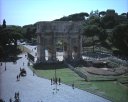
The Arch of Constantine was built in 315 AD to honour Constantine in his battle against Maxentius which is depicted in the art. For a great photo of the Arch of Constantine take it from the upper level of the Colosseum.
Roman Forum
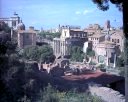
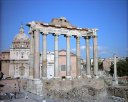
If you choose to approach the Roman Forum from the north west side you will be standing on Capitoline Hill where you will have a view of the entire Forum and the archway, Arch of Septimius Severus. Although all that remains of the Roman Forum are ruins, the pillars and parts of the buildings still standing emanate grandeur and splendour of what was once the heart of the Empire up to 2500 years ago. The Roman Forum was the base from where the Empire was governed and where Julius Caesar rose to prominence. The Basilica Aemilia was for business and banking and the church that you will see is that of San Lorenzo in Miranda. You will also notice a circular ruin with fine white columns- this was the most elegant structure in the Forum known as the Temple of Vesta. It was here that the eternal flame burned. Moving towards the Colosseum you will walk down the Forum's main street, Via Sacra, where prisoners were taunted by on-lookers as they made their way to the Colosseum.
Pantheon
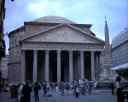
Not far from the Piazza Navona is the Pantheon, built in the beginning of the 2nd Centruy AD. The Pantheon's domed temple is said to be Rome's most noteworthy example of architecture that went on to become a church. Light only enters the Pantheon through the cupola that has a piercing at the tip creating brilliant effects at varying times of the day. The Pantheon stands in the Piazza della Rotunda. There are a few restaurants here where you can stop for a bite to eat and enjoy the views of the masterpiece.
Castel Sant'Angelo

Walk down from St Peter's square and you will see the Castel Sant' Angelo looming in front of you. The Castle serves as a mausoleum for Hadrian and others and was completed in the mid 2nd century. It is open to visitors and is worth the climb up the steps and ramps for superb views across Rome, the Tiber river and St Peter's Basilica. It is linked to the Vatican Palace by a high wall and was used by the Popes as a residence and prison. The bronze statue of Archangel Michael sculpted by Raphael stands in the Castel Sant'Angelo.
Temple of Hercules
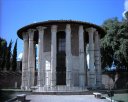
The Temple of Hercules is a beautiful columnal structure. The Temple, dating back to the 2nd or 1st c. B.C., is located between the theatre of Marcellus and the church of Santa Maria in Cosmedin. The temple is designed in a Greek style and consists of 20 columns. If you can gain access to the interior, you can see the artifacts from the area which is said to be where Hercules triumphed in battle.
The Caracalla Baths
The Caracella Baths contained spa resorts and health spas and stretches over 27 acres. It was a place of revitalisation for over 1500 people and was created by Caracella using taxes from the expanding Empire. The Caracella Baths are below the Circo Massimo on a map of the City.
Useful Links












